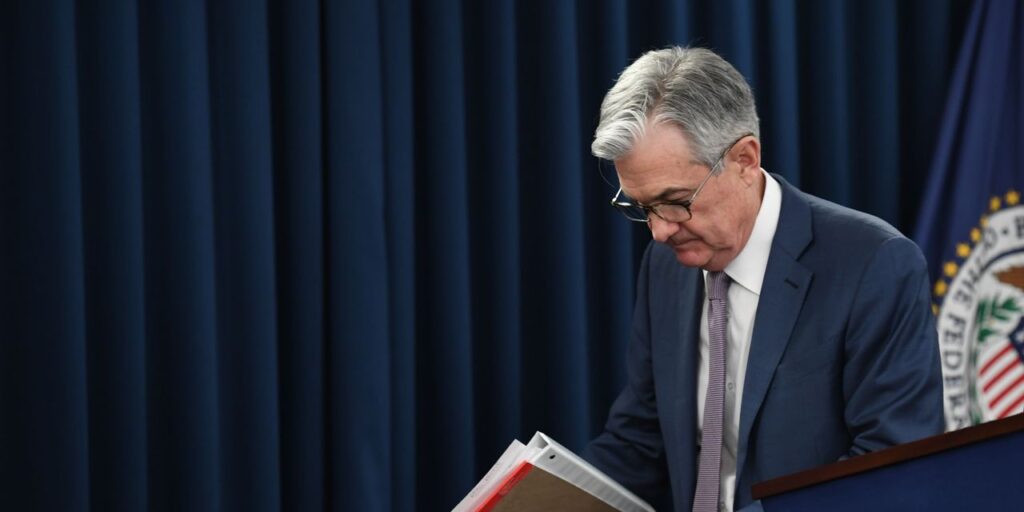The markets and many economists expect the Federal Reserve to keep rates unchanged this week while keeping the door open for a hike as soon as the next meeting in July — a “hawkish pause” that some Fed officials are calling a “skip.”
“We expect there to be close to full consensus to pause in June, but be very open to hiking in July and beyond if inflation progress is not satisfactory,” said Steve Englander, head of North America macro strategy at Standard Chartered Bank, summing up the mainstream view.
Fed policymakers meet every six weeks to map interest-rate policy. This would be the first Fed meeting without a rate hike since March 2022.
“Inflation clearly remains too high for the FOMC’s collective comfort, and regardless of whether or not they raise the funds rate this week, the Committee faces a communications challenge as they look to reinforce the following two points — they are not necessarily done raising the funds rate, and they are a long way from cutting the funds rate,” Richard Moody, chief economist at Regions Financial Corp, said.
And there are some key questions: Will the Fed nail down expectations of another hike or try to keep more optionality? Will the central bank reinforce that this is a “skip?” And will the divisions within the Fed be seen?
Here’s a guide to what to look for.
Raising the terminal 2023 dot
The clearest way for the Fed to communicate a “hawkish pause” would be to pencil in another interest rate hike this year.
In March, the Fed’s “dot plot” forecast for interest rates showed the final hike would bring the benchmark rate to a range of 5%-5.25%. That’s where rates are now. In March, seven of the 18 Fed officials saw further rate hikes this year as being appropriate.
“We believe the median ‘dot’ for year-end 2023 will shift up by 25 basis points relative to the March dot plot,” said Sam Bullard, senior economist at Wells Fargo. Bullard said he thinks the Fed will raise rates one more time in this cycle.
Economists will be watching the dispersion of dots for a gauge of the division among officials.
Hawkish dissent?
Another way to signal that the committee is leaning to hike again would be if one of the hawks on the committee dissented. Attention will be on three voting members: Fed Governors Michelle Bowman and Christopher Waller; and Dallas Fed President Lorie Logan. Last month, Logan said the economic data didn’t justify pausing rate hikes yet.
Change the statement
At their meeting in May, Fed officials removed key language that said they anticipated more hikes.
They replaced it with new language, saying that they would carefully monitor the economy and assess the impact of all their rate hikes over the past year.
Krishna Guha, vice chairman of Evercore ISI, said the Fed may try to “underline an ongoing tightening bias” in a nod to the hawks.
Other economists have said Fed Chairman Jerome Powell’s opening statement at his press conference is not the prime vehicle for Fed communication, trumping the formal statement.
Change their inflation forecast
Another way to signal they are hawkish would be for the Fed to raise its inflation forecast
As Moody noted, “Inflation clearly remains too high for the FOMC’s collective comfort.”
And Guha wrote that one way to get attention is to pencil in a “hot end-2023 inflation projection.
In March, the Fed forecast inflation, as measured by its favorite personal consumption expenditure index, would fall to a 3.3% annual rate by the end of the year, from 4.4% in April.
Read: The Fed’s crystal ball on inflation might need a fix
No major changes would be dovish signal
Like Tilley, chief economist of Wilmington Trust, didn’t think the Fed will make any hawkish tweaks to the dot plot, statement, or forecast. Tilley told MarketWatch that the Fed is done hiking, and will lower its benchmark rate by the end of the year.
The next two consumer-inflation reports are going to bring headline consumer inflation down close to 3.5%, Tilley said, which will keep the Fed on hold until they cut rates at the end of the year.
“Inflation is going to be much lower and the economy already is much lower than the growth that caused inflation and long-run inflation expectations are in check,” Tilley said.
He said he thinks the Fed will decide at year-end that the benchmark rate should be nearer 4.25% than 5.25%.
“That is still pressing on the brake. But I think conditions will be such that they need to take the foot a little bit off the brake by the end of the year,” he said.
On the other hand, some economists think the Fed might decide to raise interest rates this week.
Read: Fed might hike interest rates in June, instead of a ‘skip’
Market view: Over 60% chance of rate hike in July
Traders in the derivatives market see only a 25% chance of a rate hike this week. But they put the odds of a hike in July at over 50%.
The yield for the 10-year Treasury note
TMUBMUSD10Y,
has risen to 3.78%. The S&P 500 index
SPX,
had its highest close in 10 months.
Economists noted that the government’s May consumer inflation report, to be released on Tuesday, could have a big impact on expectations for interest-rate policy.
“Ahead of CPI, we think the Fed is likely to pitch a July hike as a 65% type probability – with a default to hike again in July if the tone of the data remains on the stronger, hotter side but not a hard lock. We think CPI would need to be red hot to deliver a plurality for more than one more hike,” said Guha of Evercore.
Read the full article here











